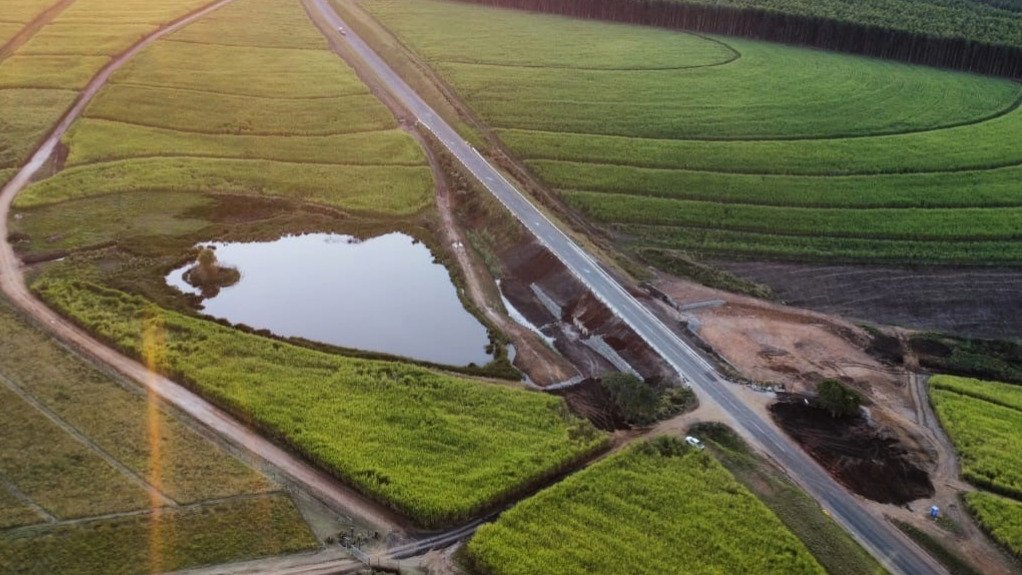Multidisciplinary professional engineering firm Zimile Consulting Engineers completed reconstruction of the N2 highway, between Durban, in KwaZulu-Natal, and Cape Town, in the Western Cape, a month ahead of schedule, following the closure of the route because it had partially collapsed.
The project was initially anticipated to take three months.
Zimile was appointed by the South African National Roads Agency to manage the project as part of its 246 km routine road maintenance contract, says Zimile Consulting Engineers route manager Amit Bhoora.
“The project started on February 1, 2024, and the road was opened on March 27, 2024, finishing up two days prior to the Easter break.”
He adds that this early reopening was critical as many South Africans travel to the coastal areas during the April holiday period; therefore, its completion ensured uninterrupted access for tourists.
Despite the project’s success, there were several challenges, including localised flooding and disruptive site conditions between Port Shepstone and Kokstad, in KwaZulu-Natal.
Further, an ageing drainage culvert collapsed, owing to “extraordinarily heavy rains” in mid-January. The rain also caused a nearby farm dam to overflow, washing away the culvert and resulting in dangerous subsidence of the road surface, Bhoora explains.
“The volume of water from the overflowed farm dam was immense. It took five days for the water to subside after we excavated a drainage channel across the embankment.”
The project’s location, on the border of two municipalities, led to delays in appointing subcontractors, as local businesses from each municipality claimed their right to be appointed as subcontractors.
To address this, road construction contractor VEA Road Maintenance and public liaison officers worked closely to engage with municipal officials and local businesses to foster a working relationship between the various service providers. Ultimately, the contractor resolved the challenge by dividing the work between the various communities.
Acquiring materials for the project was also challenging, as the nearest commercial sources for materials were over 80 km away, while inclement weather delayed progress by 18 days.
Additional trucks were brought in to increase the turnaround time for material deliveries, while agreements with quarries resulted in their operating hours being extended to accommodate the project’s timeline.
Further, the site’s muddy conditions resulted in vehicles frequently getting stuck, says Bhoora.
Various techniques were explored to resolve this, such as using nanosand to reduce the effects of water abrasion; however, the delivery time for this product was quite lengthy.
Instead, the team brought in additional rock fill to construct a temporary access road, enabling the trucks to reach the site without further delays.
Construction Considerations
Owing to constant rain and material constraints, Zimile opted for a traditional solution involving a dump rock foundation, combined with four 1.5-m-diameter concrete pipes encased in a concrete shell.
“The original design called for 1.5 m × 1.5 m box culverts. However, suppliers did not have them in stock, and the lead time was around six weeks, excluding delivery,” Bhoora explains.
Therefore, the engineer redesigned the culvert system to use 1.5-m-diameter concrete pipes, which were readily available and easier to work with. Additionally, the collar and sleeve system of the pipes allowed for faster installation, compared with box culverts.
The engineer’s redesign, incorporating large-diameter pipes, allowed for easy maintenance and the handling of increased water volumes, reducing the risk of future flooding.
Although the road was opened to traffic, final ancillary work, such as the completion of culvert headwalls, guard rails and road markings, continued. Bhoora adds that all remaining work has since been completed.
“This project is testament to the dedication and teamwork of all parties involved. We are proud to have delivered this essential infrastructure ahead of schedule, ensuring the safety and convenience of road users,” he concludes.
Edited by: Nadine James
Features Deputy Editor
EMAIL THIS ARTICLE SAVE THIS ARTICLE
ARTICLE ENQUIRY
To subscribe email subscriptions@creamermedia.co.za or click here
To advertise email advertising@creamermedia.co.za or click here













